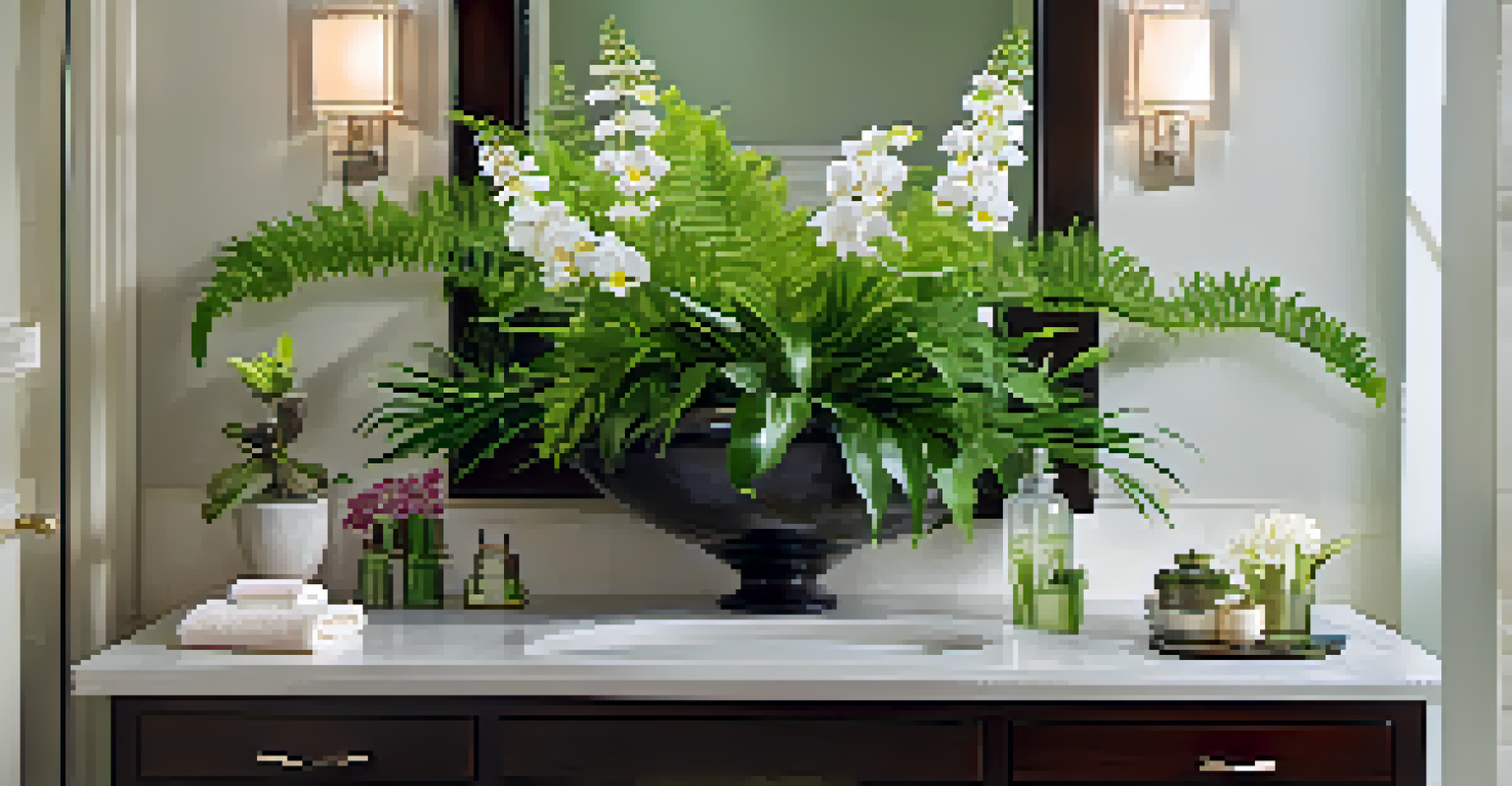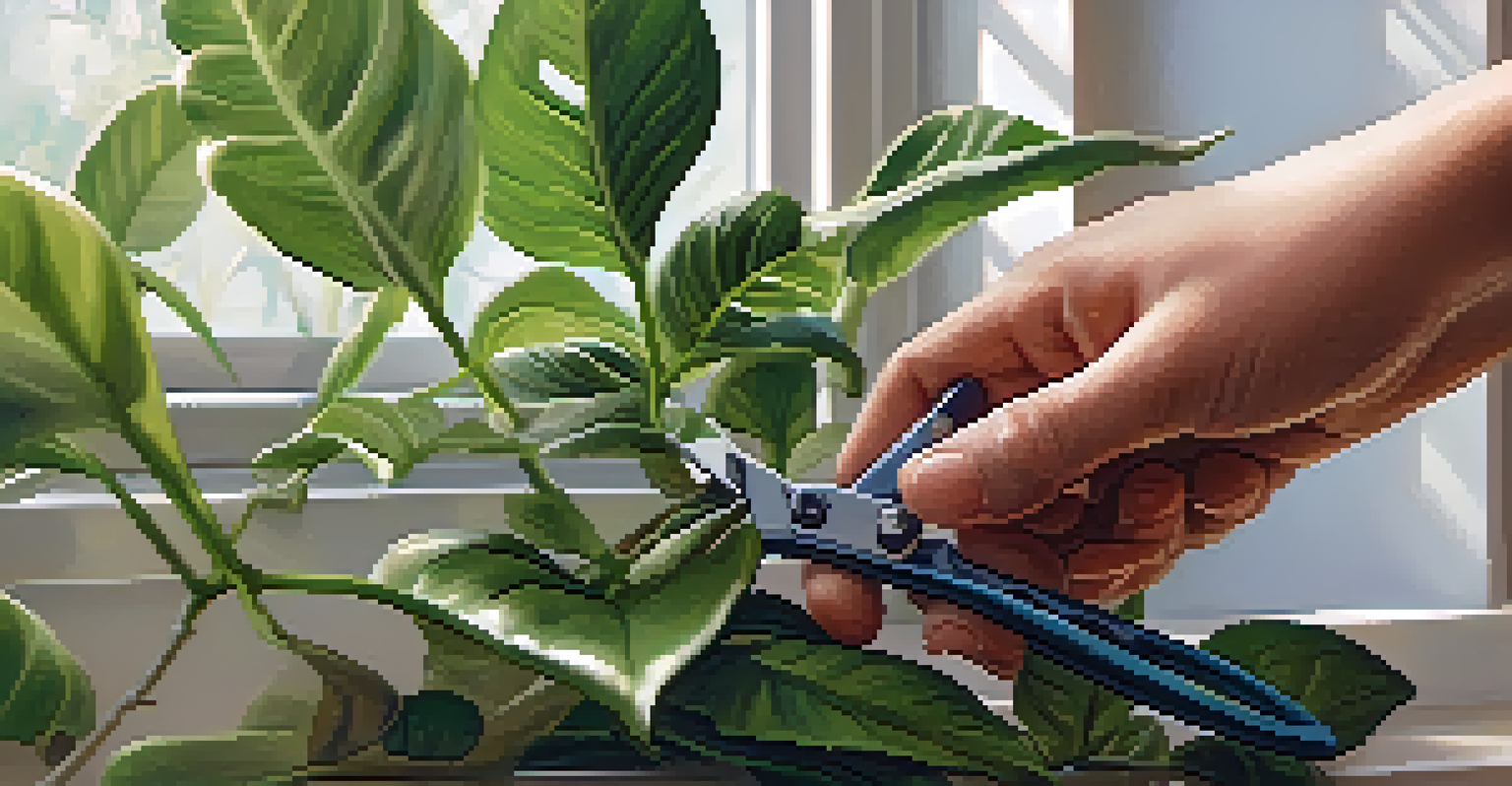Indoor Plant Care Tips for Better Air Quality Results

Choosing the Right Indoor Plants for Air Quality
When it comes to improving indoor air quality, selecting the right plants is crucial. Some plants are better at filtering pollutants than others. For instance, the Spider Plant and Peace Lily are known for their air-purifying abilities, making them excellent choices for your home.
Plants can improve our lives by improving our air quality, and they give us a sense of well-being.
Consider your living space and lighting conditions when choosing plants. While some plants thrive in low light, others need bright, indirect sunlight. Understanding these needs will help you create a lush environment that benefits both you and your plants.
Remember, more isn’t always better. A few well-chosen plants can significantly enhance your air quality without overwhelming your space. Aim for a balance that complements your home’s aesthetic while boosting its air purification potential.
Understanding the Air-Purifying Benefits of Plants
Plants not only add beauty to your home but also play a significant role in improving air quality. They absorb carbon dioxide and release oxygen, which is essential for our health. Furthermore, certain indoor plants can filter out harmful toxins like formaldehyde and benzene.

For example, the Snake Plant is particularly effective at converting CO2 into oxygen during the night, making it a great bedroom companion. This natural process helps create a fresher atmosphere as you sleep, promoting better rest.
Choose Plants for Air Quality
Selecting the right indoor plants, like Spider Plants and Peace Lilies, can significantly enhance your home's air quality.
By incorporating various plants into your indoor spaces, you can create a mini-ecosystem that enhances your overall well-being. The key is to select plants that are not only beautiful but also functional in purifying the air you breathe.
Proper Watering Techniques for Healthy Plants
Overwatering is one of the most common mistakes made by indoor gardeners. It can lead to root rot, which not only harms your plants but can also negatively impact air quality. To avoid this, make sure to check the soil moisture before watering—if it's still damp, hold off on adding more water.
The best time to plant a tree was 20 years ago. The second best time is now.
Different plants have different watering needs, so it’s important to research the specific requirements of each variety. For example, succulents require less frequent watering compared to tropical plants, which may need more moisture to thrive.
Using pots with drainage holes can also help prevent overwatering. This simple technique allows excess water to escape, keeping your plants healthy while ensuring they continue to purify your air effectively.
Optimal Light Conditions for Indoor Plants
Light is a critical factor in keeping your indoor plants healthy and thriving. Each plant species has unique light requirements, ranging from low light to bright, indirect sunlight. Understanding these needs can vastly improve your plant care routine and their air-purifying capabilities.
For instance, if you have a room that doesn’t receive much natural light, consider plants like the ZZ plant or Pothos, which can adapt well to lower light conditions. Placing them near windows can also help them soak up the sunlight they need to flourish.
Watering and Light are Key
Understanding proper watering techniques and light conditions is essential for keeping your indoor plants healthy and effective at purifying air.
If you notice your plants stretching toward the light, they may not be getting enough. In such cases, rotating your plants or investing in grow lights can provide them with the right amount of light, ensuring they continue to contribute to better air quality.
Maintaining Humidity for Optimal Plant Health
Humidity plays a vital role in plant health and, consequently, air quality. Many indoor plants thrive in environments with higher humidity levels. If your home is too dry, consider using a humidifier or grouping plants together to create a microclimate with increased moisture.
Plants like ferns and orchids particularly benefit from higher humidity. Keeping them in bathrooms or kitchens, where humidity levels are naturally higher, can lead to healthier plants and improved air quality in those spaces.
During winter months, when indoor heating can dry out the air, you may need to take extra steps to maintain humidity. Simple practices like misting your plants or placing a tray of water nearby can help keep humidity levels in check.
Regular Pruning for Healthy Growth and Air Quality
Pruning your indoor plants is essential for maintaining their health and encouraging new growth. By removing dead or yellowing leaves, you not only improve the plant’s appearance but also enhance its ability to purify the air. This process allows the plant to focus its energy on new leaves and growth.
Regularly inspecting your plants for pests or disease can also help prevent problems before they escalate. Keeping your plants healthy ensures they continue to contribute positively to your indoor environment.
Routine Care Ensures Longevity
Establishing a consistent plant care routine helps maintain plant health and improves the air quality in your home.
Incorporating pruning into your plant care routine can also be a great way to bond with your greenery. It allows you to connect with your plants while ensuring they remain healthy and effective at improving air quality.
Fertilizing Indoor Plants for Enhanced Growth
Just like people, plants need nutrients to thrive. Fertilizing your indoor plants periodically can help replenish the nutrients in the soil, promoting healthier growth and more effective air purification. However, it’s important to use the right type of fertilizer and follow the recommended guidelines.
Liquid fertilizers are often effective and easy to apply, but don't overdo it—too much fertilizer can harm your plants. A general rule of thumb is to fertilize during the growing season, typically spring and summer, while reducing or stopping in the fall and winter.

Choosing a balanced fertilizer that contains essential nutrients such as nitrogen, phosphorus, and potassium will support your plants' overall health. This, in turn, enhances their ability to clean the air, making your home a healthier place to live.
Creating a Plant Care Routine for Longevity
Establishing a consistent plant care routine is key to ensuring your indoor plants thrive. Regularly checking in on your plants will help you catch any issues before they become serious problems. A routine can include watering, pruning, and inspecting for pests, making care manageable and systematic.
Consider setting reminders on your phone or using a calendar to keep track of tasks like watering or fertilizing. This helps you stay organized and ensures that your plants receive the care they need to flourish.
The more you engage with your plants, the more you’ll learn about their needs. Over time, this routine will not only improve your plants’ health but also enhance your home’s air quality, creating a more pleasant living environment.